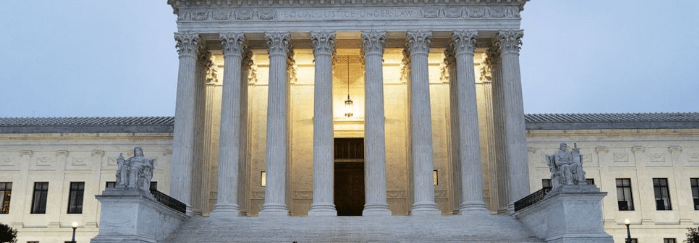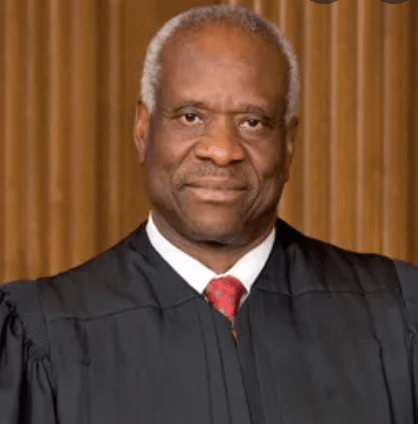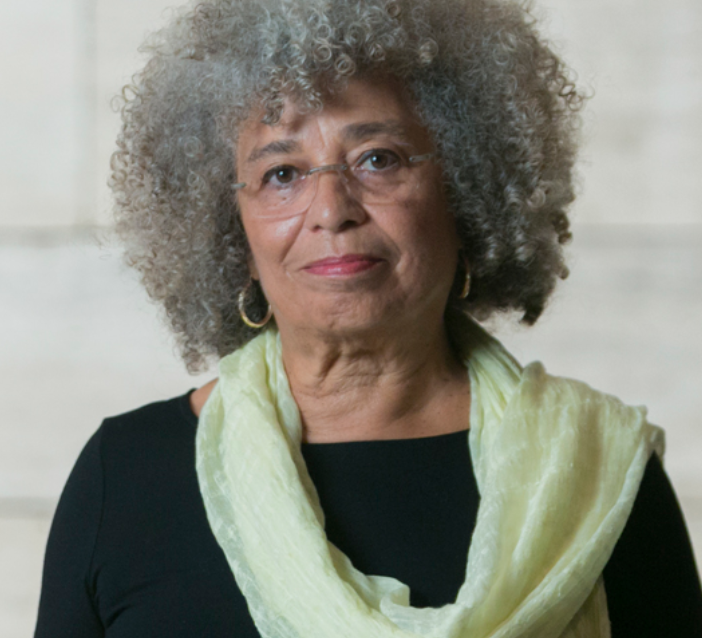
Roe vs Wade: US Supreme Court decision based on race, gender and class oppression
Reprinted from UK Website LeftHorizons.com
By Karen Lockney
There has been a widespread outcry against the US Supreme Court decision to overturn Roe v Wade, the 1973 landmark ruling in which the Supreme Court then ruled (by 7 to 2) that the right to terminate a pregnancy was protected by the constitution.
On the 24 June 2022 the Supreme Court ruled by 6-3 in favour of the state of Mississippi’s ban on abortions after 15 weeks, effectively ending the constitutional right to abortion, because individual states are now able to ban the procedure. Thirteen states have already passed trigger laws to ban abortion immediately after the ruling, and a further 26 have indicated they will criminalise abortion. According to Planned Parenthood 36m women could lose their right to an abortion.
Much of the immediate reaction to the ruling has focused on the religious reasoning given by pro-life campaigners. However, any analysis of this extremely worrying ruling must look beyond this. It is far from being a move to ‘protect life’; it is a racist, misogynistic and powerful show of hand from the elite, designed to keep working people oppressed. The vast majority of people who have abortions are cisgender women, but abortion rights are vital for anyone who can become pregnant.
The current situation as confusion reigns
At the time of writing, the overturning of the Roe v Wade precedent has created a complete lack of clarity across the US, as many lawsuits have been issued by abortion providers trying to stay in operation. Bans are on hold in Texas, Utah and Louisiana and are pending in at least six other states with more expected to follow. The Financial Times called it a, “Pandora’s box of abortion statutes, leaving experts with no definitive answers on which measure reign supreme at state level.” Meanwhile, as confusion reigns, thousands of women dealing with unwanted pregnancies must be in hell right now, working out if they have any choice at all.
Currently, no bans exist to prosecute those who go to another state for an abortion, but there is concern expressed that this may be challenged imminently. The direction of travel, according to many commentators, is that those who assist abortions (e.g. drivers to appointments, doctors), could also be liable for prosecution. Such a law was blocked in Missouri this year, but clearly there is an appetite for further legislation of this kind.
Social media platforms like Tik Tok are awash with posts from young people offering help to find ‘camping sites’ (or other euphemisms) in states not yet affected by the ban, including help finding ‘camping sites’, driving to them, somewhere to stay if the ‘campsite’ is full, and nobody needs to know you’ve been ‘camping’. Even such outpourings of grassroots solidarity could soon be made illegal.

Texas attorney-general, Ken Paxton, said prosecutors could bring criminal charges based on abortion bans predating Roe. The ban was suspended following a challenge by abortion providers, but it will be heard on July 12th. Professor Christopher Griffin, who consulted on the recent challenge said, “It’s clear that precedent doesn’t necessarily have the same value it did before if the Supreme Court can overturn its own 50 year precedent in the way it did.”
Other rights will be challenged after abortion
Many fear attacks on other settled rights will follow. Supreme Court Justice Clarence Thomas wrote that, “in future cases, we should reconsider all of this Court’s substantive due process precedents including Griswold, Lawrence and Obergefell [2015 5-4 decision legalising same sex marriage] …we have a duty to correct the error established in these precedents.”
Kavanaugh disagreed with this, saying that overturning Roe does not threaten the other precedents, but the three dissenting SC judges (Breyer, Sotomayor and Kagan) said “no-one should be confident that this majority is done with its work.” Some have voiced concerns the precedent of Loving v Virginia (1967), which ended any restrictions on interracial marriage, could be under threat. These are dangerous times.
The ruling seems like a shock, but in fact it’s been in the offing for some time, probably in fact since the original Roe v Wade ruling. A leaked document in May showed Justice Samuel Alito viewed Roe v Wade as “egregiously wrong” and the writing was on the wall.
However, legislation in the 80s had already weakened access to abortion, and most notably Planned Parenthood v Casey in 1992 ruled that states could restrict abortions even in the first trimester for non-medical reasons. Many states already have severe restrictive measures in place, and very limited provision indeed. Between 2011-4 state legislatures enacted 231 new abortion restrictions.

In 2015, 57% of all US women lived in states hostile to reproductive rights (National Women’s Health Network, 2016). The right wing has been playing the long game, manoeuvring justices into position to secure power to overturn settled rights. Trump appointed a third of the current Supreme Court judges (Kavanaugh, Coney Barrett and Gorsuch), not without controversy.
Hardly a shining endorsement of ‘democracy’ in the USA
A Guardian article last year drew attention to the relatively young ages of the judges he appointed (including appellate and district courts), meaning these appointments will, “shape American jurisprudence for years to come”. The fact nine non-elected individuals can dictate the experience of millions of people is hardly a shining endorsement of ‘democracy’ in the USA.
Given the long-term strategy of the right, we might question what the Democrats were playing at all this time, as many have done, very vociferously on social media, responding to Obama’s tweets of his disapproval of the ruling. The Democrats failed to codify Roe v Wade in federal law and Ruth Bader Ginsburg refused to retire at a point in time when Obama could have picked her replacement. Obama reneged on his election promise that the first thing he would do in office would be to sign a Freedom of Choice Act. Biden has also failed to codify Roe v Wade, despite having said in the past that abortion law was a priority for him.
We can question whether Democracts are nervous over the divisiveness of this issue. Public opinion is against the recent ruling, but it is far from unanimous. A CNN CBS/YouGov poll last week found the majority of US adults disapprove of the Supreme Court ruling (59%); 58% are in favour of a federal law making abortion legal nationwide; 64% would like it legal in their state in most or all cases. These are positive figures in a sense, but the minority is still sizeable.
Should we be shocked?
Of course this is a considerable step backwards, overturning women’s reproductive rights that were considered settled. However, to react in horror is to miss the point that the history of reproductive rights in the US makes this recent development far from surprising. Was there really a right to choose prior to this ruling?
As we have shown, legislative obstacles have already been placed against reproductive rights in recent decades and this struggle is not new. Anti-racist educator Jane Elliott remarked, “the fact you’re just now waking up to the fact reactionary forces seek to strip women and marginalised communities of their autonomy is a symptom of great privilege”.
In her essay Racism, Birth Control and Reproductive Rights, Angela Davis describes the “lily white complexion of the abortion rights campaign”. She drew attention to the 1977 Hyde Amendment, mandating the withdrawal of federal funds for abortions, effectively divesting the rights to abortions of “Black, Puerto Rican, Chicana and Native American Indian women, together with their impoverished white sisters”.
The fight against enforced sterilisation of Black and low income women was not taken up by the women’s movement as a whole. And this is before we go back to the reproductive capacity of enslaved women being a commodity. Davis wrote, “in the eyes of slave holders, slave women were not mothers at all; they were simply instruments guaranteeing the growth of the slave labour force. They were breeders – animals, whose monetary value could be precisely calculated in terms of their ability to multiply their numbers.”

This chilling history of reproductive rights, up to the present day, is why many commentators have raised eyebrows at the protestations of middle-class white women that their rights have ‘suddenly’ been taken away. It has been argued that the recent ruling is aimed at halting any decrease in the procreation of white people. Illinois Republican Mary Miller stood next to Trump at a rally last week saying, to loud cheers, that the Supreme Court ruling was a ‘victory for white life’. Her spokesperson later claimed she meant to say ‘victory for a right to life’, but even if we believed it was a ‘mix up of words’, her ‘explanation’ does nothing to drown out the crowd’s cheers.
‘A contempt for women’ – but some women more than others
Writer Alice Walker said last week the ruling shows a ‘contempt for women’ but this is true for some women more than others. What is true is that it shows contempt of all women who are poor. The 1973 Hyde amendment declared no federal funds could be used for abortions except where the life of the mother would be endangered if the foetus were carried to term. This affected Medicaid which uses combined state and federal funds to pay for cost of health care.
Texas, Ohio and Georgia removed abortion cover from Medicaid altogether: it has not been an option, unless privately funded. Three quarters of women seeking abortions in the US are in poverty or a low income bracket. The poorest 12% of women account for nearly 50% of abortions, and the poorest 30% for 75% (BMJ, 2019).
The Planned Parenthood website aims to support people to understand options for financing abortions, but nevertheless it still points out they can cost up to $750. Giving people no choice as to when they can have children risks trapping them in generational poverty cycles. Some comment that this is precisely what suits the elite. Wealthier people are more likely to have health insurance and be more able to travel to states where abortion is still legal, as well as being more able to afford to take time from work or study.
Hypocrisy over ‘protecting life’
Even for anyone not convinced that gender, race and class oppression are at the heart of the ruling, the ‘protecting life’ argument simply does not stack up. This is not about children. There have been 250 mass shootings in the US this year, many as we know, in schools. Two weeks ago, the very same Supreme Court overturned a century-old New York statute requiring anyone to show ‘proper cause’ to carry concealed gun in public.
Gun laws get relaxed, abortion laws get tightened – it would not make anyone more confident in the safety of their children. A foetus gets increased protection in the womb; a living child gets less protection in the supposed safe spaces of their schools.
Legislation which will lead to more unwanted children being born, does nothing to help those children beyond or even in the womb. There is no further health care support for those who are pregnant, no increased child care or child benefits, no increase to education budgets. There is nothing in the thinking behind this ruling, nor the support of millions of Americans for it, which supports those who are pregnant or supports families.
There is nothing remotely convincing in this ruling, nor the support
for it, nor the decades of right wing manoeuvring, nor the Democrat
inaction, which suggests this is about protecting life. Plainly and
simply, this is about protecting the ruling class.
No comments:
Post a Comment